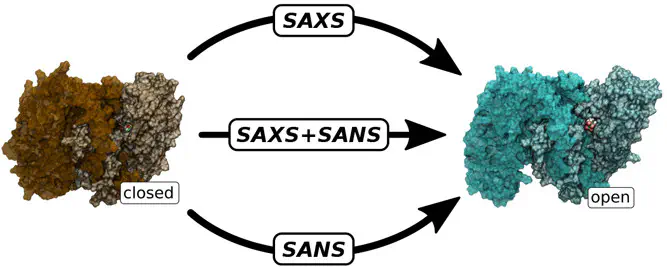Combined Small-Angle X-ray and Neutron Scattering Restraints in Molecular Dynamics Simulations

Abstract
Small-angle X-ray and small-angle neutron scattering (SAXS/SANS) provide unique structural information on biomolecules and their complexes in solution. SANS may provide multiple independent data sets by means of contrast variation experiments, that is, by measuring at different D2O concentrations and different perdeuteration conditions of the biomolecular complex. However, even the combined data from multiple SAXS/SANS sets is by far insufficient to define all degrees of freedom of a complex, leading to a significant risk of overfitting when refining biomolecular structures against SAXS/SANS data. Hence, to control against overfitting, the low-information SAXS/SANS data must be complemented by accurate physical models, and, if possible, refined models should be cross-validated against independent data not used during the refinement. We present a method for refining atomic biomolecular structures against multiple sets of SAXS and SANS data using all-atom molecular dynamics simulations. Using the protein citrate synthase and the protein/RNA complex Sxl–Unr–msl2 mRNA as test cases, we demonstrate how multiple SAXS and SANS sets may be used for refinement and cross-validation, thereby excluding overfitting during refinement. For the Sxl–Unr–msl2 complex, we find that perdeuteration of the Unr domain leads to a unique, slightly compacted conformation, whereas other perdeuteration conditions lead to similar solution conformations compared to the nondeuterated state. In line with our previous method for predicting SAXS curves, SANS curves were predicted with explicit-solvent calculations, taking atomic models for both the hydration layer and the excluded solvent into account, thereby avoiding the use of solvent-related fitting parameters and solvent-reduced neutron scattering lengths. We expect the method to be useful for deriving and validating solution structures of biomolecules and soft-matter complexes, and for critically assessing whether multiple SAXS and SANS sets are mutually compatible.